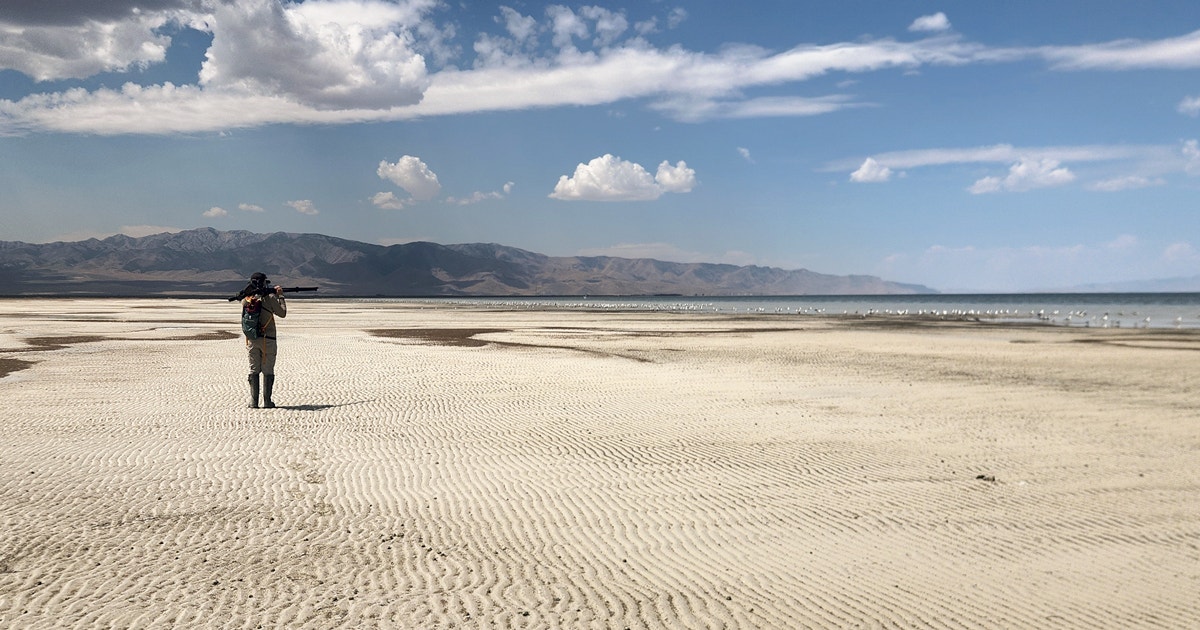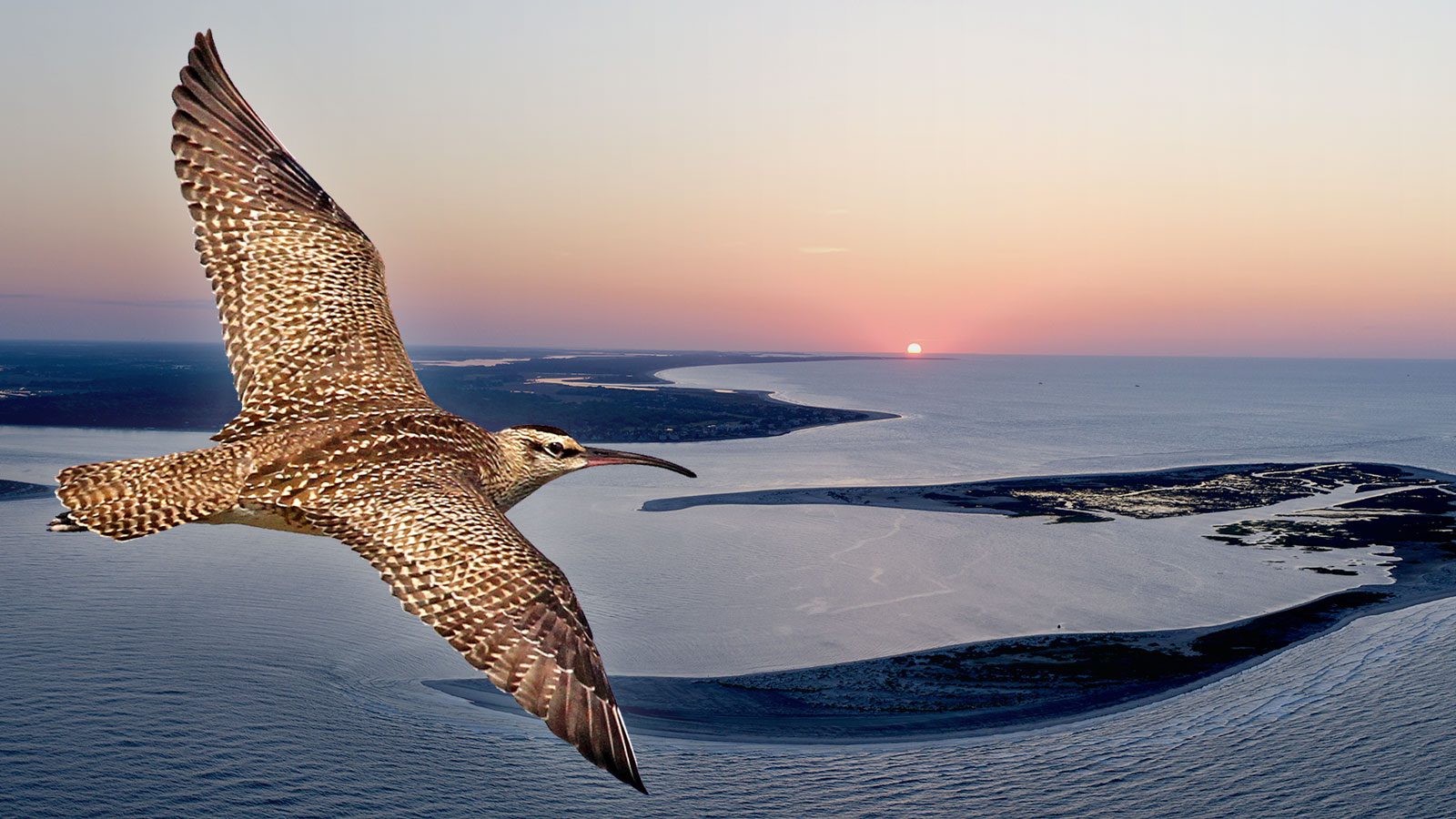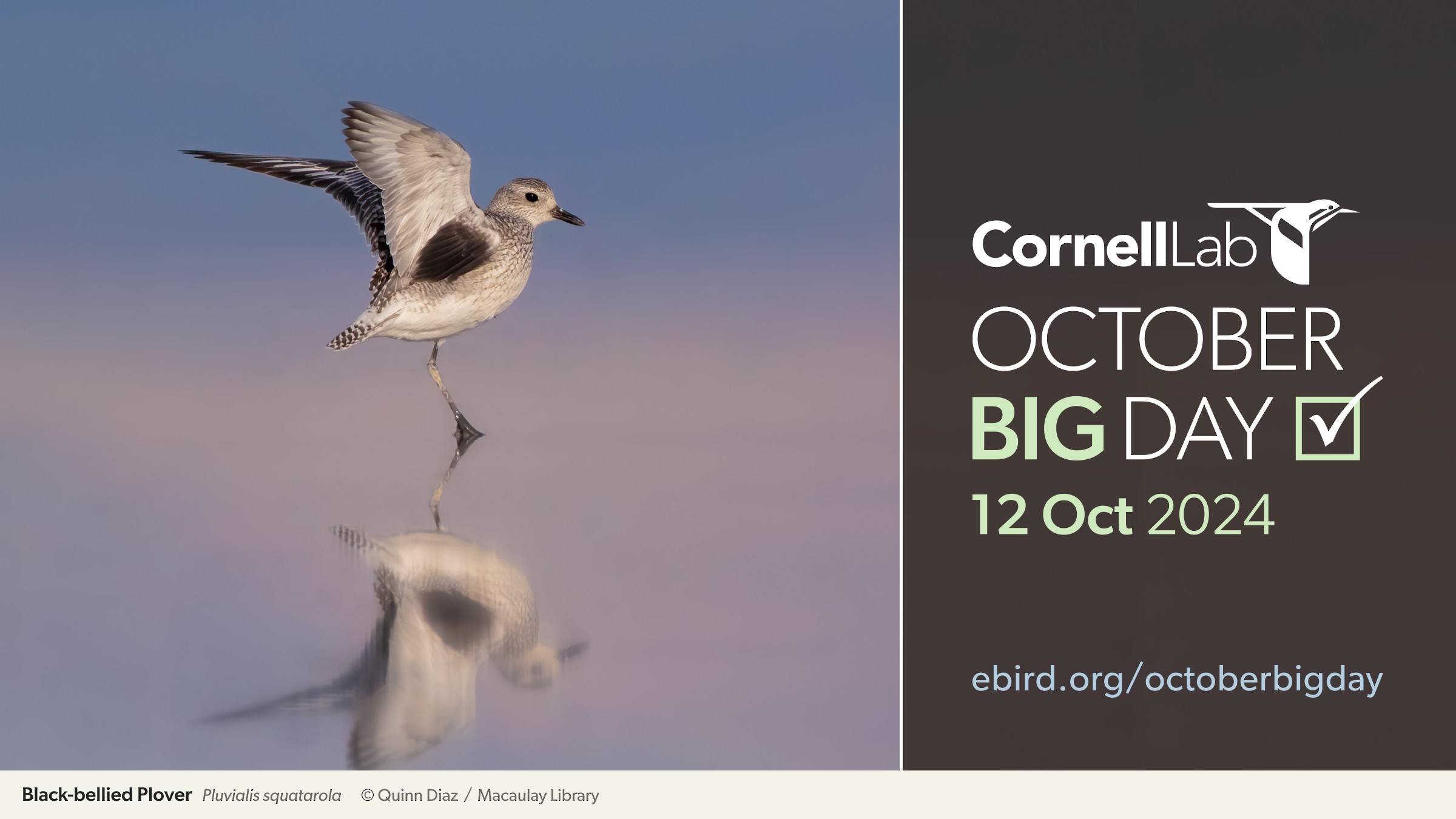Replicating a historic survey from 30 years ago, the Intermountain West Shorebird Survey is a five-year effort to count shorebirds at more than 200 wetland sites across 11 states in the Intermountain West. The program aims to better understand shorebirds and their distribution across wetlands, how that distribution has changed over the past three decades, and how the wetlands themselves have changed. During peak migration—a one-to-two-week period in the spring and fall—a network of volunteers, including state and federal agency biologists, are on the ground, spotting scopes and binoculars in hand, counting shorebirds.
After months of organization and planning, surveyors went out across those 200+ sites to capture data from fall migration from August 9th through August 22nd, 2024. This is a photo diary from two of those survey teams: one on Great Salt Lake, where over 100 participants surveyed almost the entire lake and its wetlands in one “Big Day” and the other at Salton Sea, where surveyors split their survey between three days.
Survey Site One: Great Salt Lake
Survey Team One:
- Max Malmquist, Engagement Manager for National Audubon Society’s Saline Lakes Program and Lead Coordinator of the Intermountain West Shorebird Surveys
- Mike Malmquist, Retired, bird-lover, supportive father, says he’s getting too old for these dang surveys
Thursday, August 8, 2024
Tooele County, 6:45 p.m.
Max and Mike drop off a vehicle at the end of their survey route, an unbroken 9-mile stretch of shoreline with limited access that covers portions of Great Salt Lake’s south shore in both Salt Lake and Tooele Counties. They post signs at the public access gate, a popular location for target shooting, informing shooters that the shorebird surveys will be underway the following day and not to shoot toward the lake.
Friday, August 9, 2024
Salt Lake City; 4:40 a.m.
BEEP BEEP—alarm goes off.
Salt Lake City; 5:55 a.m.
Max starts his journey to the survey site, picking up his dad Mike on the way.
After a thirty-minute drive, they arrive at the entrance gate to Great Salt Lake State Park and Marina.
Another 2 miles of driving and they arrive at Black Rock Historic Site.
Great Salt Lake is one of the largest survey sites, with over 100 volunteers spread across 1700 square miles of the lake and its associated wetlands. With such an expansive area, survey teams travel on foot, by car, and by airboat.
Great Salt Lake; 6:30 a.m.
Gear up: water, sunscreen, snacks, binoculars, muck boots, bug spray, and spotting scopes.
Surveyors must prepare for long days with persistent weather such as heavy rain, hot temperatures, and persistent bugs.
Great Salt Lake; 6:45 a.m.
Sunrise.
The survey begins as Max and Mike set out on their route across the South Shore of Great Salt Lake. Counting begins nearly immediately.
Great Salt Lake; 6:45-9:45 a.m.
Max and Mike move through their first survey area.
Significant sighting event: a record new high count for Max and Mike on their route of Snowy Plovers on the south shore of Great Salt Lake.
Great Salt Lake; 10:45 a.m.
Midpoint in the day. Snack time.
Temperatures have already reached 96 degrees Fahrenheit. To cope with the heat, the surveyors periodically drench bandanas in water to use evaporative cooling.
Snowy Plovers continue to be the significant sighting of the day, including 79 chicks that are 2 weeks of age or younger. Max recalls how difficult it was to count such a high number of Snowy Plovers as they are cryptic and blend in, making them extremely easy to miss. Thoroughly scanning the Great Salt Lake lakebed and playa to get the most accurate count as possible takes a lot of focus and energy.
Great Salt Lake; 10:45-2:45 p.m.
Max and Mike move through their second 4.5 mile survey area. At this point, they’ve counted 430 Snowy Plovers and over 5,000 Wilson’s Phalaropes in Gilbert Bay. Other significant sightings include Baird’s Sandpipers, a Semipalmated Plover and a Sanderling. Keeping a running tally of shorebirds can be difficult so the two must stay in constant communication as they count to ensure accuracy and no duplication.
Great Salt Lake; 2:45-3:45 p.m.
After walking nearly nine miles through their first two survey areas, Max and Mike get to their vehicle they left the evening before to survey their third and fourth, final survey sites for the day. The last two sites are small and can be counted with a stationary scan with a spotting scope from a parked vehicle.
Great Salt Lake; 3:45 p.m.
End of survey.
Salt Lake City; 4:45 p.m.
Max and Mike arrive back home where they finalize data sheets with weather, site conditions, and total shorebird counts.
Survey Site Two: Salton Sea
Survey Team Two:
- Camila Bautista, Audubon California’s Desert and Salton Sea Program Manager
- Mark Dettling, Avian Ecologist for Point Blue Conservation Science
Salton Sea is 35 miles long and 15 miles wide and broken into 19 major survey sections, with subsections within each of those, i.e.: Segment 1A, 1B, 1C, etc. One of the challenges Camila faces in each survey is finding surveyors to participate. Compared to Great Salt Lake’s 100 volunteers, including Camila there are just 14 surveyors covering all of Salton Sea.
A majority of the Salton Sea is surveyed by both the United States Fish and Wildlife Service and the California Department of Fish and Wildlife by airboat. Segments known for high bird density that are accessible by foot are reserved for foot teams.
Foot surveys can prove difficult as they are hard to access by car and there are often spots along the playa that are too muddy to walk through. Camila and her team run foot surveys in spaces known to be safe and accessible.
Tuesday, August 13, 2024
Palm Springs; 6:45 p.m.
Camila drives from Palm Springs to her Mom’s’ house in Coachella, 30 minutes closer to the survey site to save time in the morning.
Wednesday, August 14, 2024 (Survey Segments 14A-14C)
Coachella; 4:00 a.m.
Beep, beep—after just four hours of sleep, the alarm goes off. With temperatures forecasted to reach 113 degrees Fahrenheit, it’s time to pack the gear, including plenty of sun protection: rubber boots, binoculars, spotting scope, plenty of extra water, sun gear, long sleeves, and even sun gloves.
Coachella; 5:00 a.m.
Camila starts her 45-minute journey to meet the other surveyors at Bombay Beach.
Bombay Beach, Salton Sea; 5:45 a.m.
Camila meets all of the other surveyors at Bombay Beach to carpool to the far end of the survey site to ensure the survey runs one-way. After a 10-minute drive, they arrive at Niland Marina around 6 a.m. and gather their things to set out for the day.
Salton Sea, 14A; 6:05 a.m.
Camila, Mark Dettling, Miguel Aldana, and Pamela Taylor walk the shoreline and stop at the first survey point. As the sun begins to rise, the team starts their first subsegment of the day, 14A, at 6:17 a.m.
The team wraps up the first subsegment at 7:04 a.m.
Salton Sea, 14B; 7:05 a.m.
The team moves on to Segment 14B, which runs from 7:04 a.m. through 8:30 a.m.
Salton Sea, 14C; 8:30 a.m.
The team moves on to Segment 14C, the final segment of the day, which runs from 8:30 a.m. through 9:50 a.m.
At just about 10:00 a.m., the team wraps up the day after spotting thousands of Least and Western Sandpipers, lots of Snowy Plovers, Black Necked Stilts, and a handful of Marbled Godwits, Dowitchers, Wilson’s and Red-Necked Phalaropes, Willet, and Sanderling.
Finishing early is important, as temperatures reach 111 degrees Fahrenheit later in the day.
Thursday, August 15, 2024 (Survey Segment 10A & 15A-15B)
Coachella; 4:00 a.m.
Beep, beep—alarm goes off, time to start another day.
Coachella; 4:45 a.m.
With a longer drive ahead, Camila hits the road earlier to reach survey segment 10A, a small wetland segment at the very southern end of Salton Sea. This area runs adjacent to an ongoing restoration run by California State called the Species Conservation Habitat Project. It also runs near agricultural water inflows from farms, resulting in a larger presence of birds.
Salton Sea; 5:45 a.m.
After meeting at Poe Road, a long dirt road that gives surveys the closest access to Segment 10A, the teams begin their walk.
Salton Sea; 7:00 a.m.
The team finishes surveying segment 10A. Despite being a shorter survey, they counted a lot of birds. Significant sightings included counting many Black Necked Stilts and Least/Western Sandpipers, as well as thousands of Red-Necked Phalarope.
Camila and her team also saw some Semi-Palmated Plovers, Greater Yellow Legs, Lesser Yellowlegs, Dowitchers, Wilson’s Phalaropes, and Stilt Sandpipers.
Salton Sea; 7:50 a.m.
After walking back to her car, Camila sets off back to the Bombay Beach Area for the final surveys of the day: Segments 15A and 15B.
Salton Sea; 8:55 a.m.
Armed with their gear once more, the team sets off to start surveying Segment 15 A, which takes them until about 9:30 a.m.
Salton Sea; 9:30 a.m.
The team begins the final survey segment of the day: Segment 15B.
Both this segment and the previous one are far less dense for bird count. With that said, Camila’s team did see many Least and Western Sandpipers, a handful of Snowy Plovers, Black Necked Stilts, Semipalmated Plover, and Willets.
After the 4-to-5-mile trip, with hotter temperatures than the day before, Camila’s fatigue hits and she’s happy to call it a day.
Max and Camila’s experiences are just two examples of the over 200 surveys carried out by an incredible network of volunteers and biologists. Surveys such as the Intermountain West Shorebird Surveys are only possible thanks to the countless volunteers who spend, at times grueling, days out in the field keeping intense concentration to ensure the most accurate representation of birds. The data they collect will inform management of the wetlands these shorebirds need and help to prioritize sustaining food, habitat, and resources for all shorebirds and other species that depend on those wetlands.
Want to get involved?
To sign up as a volunteer at Great Salt Lake contact Max Malmquist at max.malmquist@audubon.org.
To sign up as a volunteer at Salton Sea contact Camila Bautista at camila.bautista@audubon.org.
You can also visit the new Intermountain West Shorebird Survey Website to learn more and check out volunteer resources: https://www.imwss.org/




